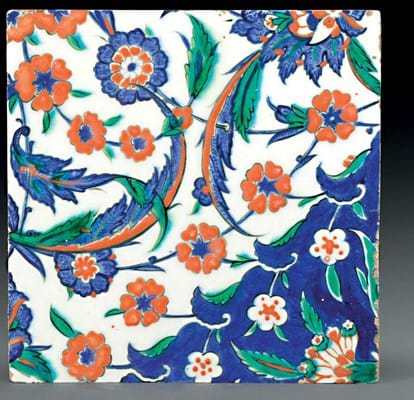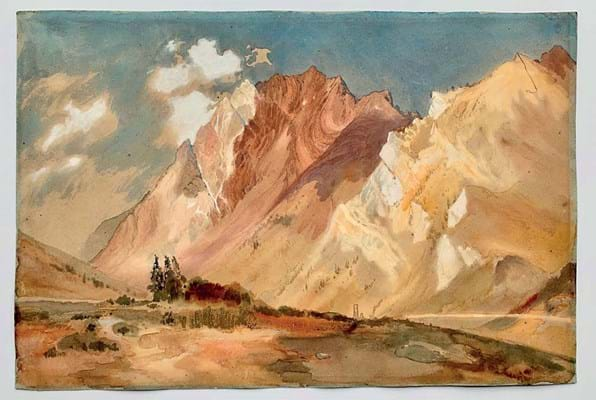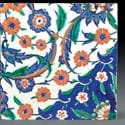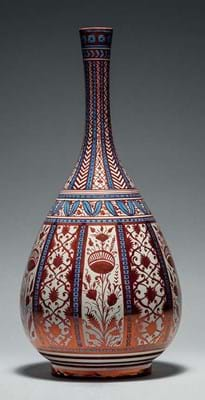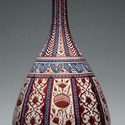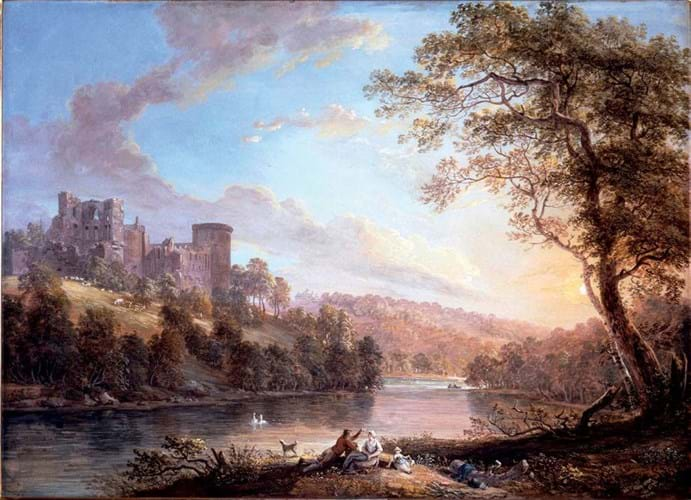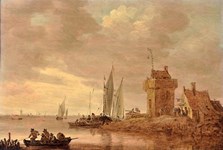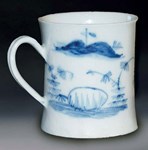Offered during London Art Week (LAW), a late-16th century Iznik tile available from dealership Oliver Forge and Brendan Lynch represents two historic collections.
It was first acquired by Ambroise Baudry (1838-1906), a French architect who lived and worked in Egypt for 15 years. He amassed a huge collection of Islamic tiles, many of which were bought by the Louvre in 1898.
The tile in question, however, eventually made its way to the Kensington, London, flat of Dr Mark Zebrowski (1944-99), an Islamic and Indian art historian who kept examples of Iznik, Safavid and central Asian ceramic tiles on his mantlepiece.
The Mayfair dealership offers the tile for $52,000, as part of its show Ottoman Patronage and European Merchandise: Works of Art from Turkey and France. It includes a range of cross-cultural items such as European depictions of Istanbul, a Beykoz cut-glass ewer and basin and examples of porcelain designed for the Turkish market.
Iznik pottery reached Europe by the late 16th century, attracting one of its first collectors in 1577, when the Habsburg ambassador to the Sublime Porte had a consignment of tiles sent to Venice.
Interest in Islamic art was revived following various ‘art and industry’ exhibitions of the mid 19th century, drawing in new collectors such as Baudry as well as Frederick Lord Leighton, J Pierpont Morgan and the Rothschild family.
Collecting is a theme for this edition of LAW (December 1-6) as it hosts its inaugural symposium.
Conversations on Collecting, held at the National Gallery on December 2, hosts art world and museum professionals speaking on topics such as the future of collections, reuniting them in their original settings and how museums can better engage with the public.
Exhibitions line-up
Meanwhile, 32 exhibitions featuring art from the ancient world to the present are taking places at galleries across Mayfair and St James’s
Among the collectors featured is Peggy Guggenheim (1898-1979).
In 1938 the American socialite and collector opened a Modern art gallery, Guggenheim Jeune, in London. It closed after 18 months, before the outbreak of the Second World War. Eighty years on, Ordovas celebrates the Abstract and Surrealist artworks once in her collection with a showcase of works by Jean Arp (1886-1966) and Yves Tanguy (1900-55).
M&L Fine Art presents a series of bronzes by Giacomo Manzù (1908-91) all acquired by a single private Italian collection during the artist’s lifetime. Ben Elwes, meanwhile, showcases a painting once owned by Victorian critic John Ruskin (1819-1900), the great supporter of ‘truth’ in art. He acquired Mount Superior as viewed from Alta, Little Cottonwood Canyon, Utah, directly from artist Thomas Moran (1837-1926).
The pair encountered each other when the American artist visited Britain in 1882. Ruskin advised Moran to “study nature carefully and reproduce her wonders accurately”.
Moran had completed his watercolour en plein air, c.1879, as part of a commission from the Grand Pacific Railway to promote tourism in the region. It was included in a group of works he exhibited in England, and is now included in Elwes’ show Artistic Relationships: Anglo-American Paintings.
On travels
Travel and cultural exchange are recurring characteristics at this LAW, demonstrated by Moran’s watercolour and the Iznik tile, as well as works such as an oil by British painter Joseph Severn (1793-1879) of Italian banditti on show at Karen Taylor Fine Art. The Brigand’s Family (1825) was probably a commission. Banditti made fashionable subjects and Severn had first-hand experience of them from an attempted robbery while travelling around Naples in 1823. This picture, which shows the family of a sleeping brigand in the Alban hills, focuses on the mother and their apparently precarious position.
S Franses fits the travel and exploration theme with its show Giant Leaf Tapestries of the Renaissance.
Works influenced by the discovery of tropical lands and exotic wildlife are available at prices ranging from £20,000-450,000.
Exhibiting with Callisto Fine Arts in St James’s, Raccanello LePrince stages Orientalismo fiorentino: the taste for the exotic in 19th century Florence. It features pieces by Ulisse Cantagalli (1839-1901), an Italian ceramicist influenced by Eastern works of art. Prices start around £1500.
During the week, John Mitchell Fine Paintings stages ‘Romantick Situations’ – Castles and the picturesque in 18th century Britain, the title taken from Julius Caesar Ibbetson’s description of Morlais Castle in south Wales.
The show explores the Georgian interest in Britain’s past, particularly its huge medieval castles. Ruins of abbeys and fortresses became key elements in Romantic pictures, as demonstrated in Paul Sandby’s 1795 painting Bothwell Castle, Lanarkshire, above. Prices range from £2500-75,000.
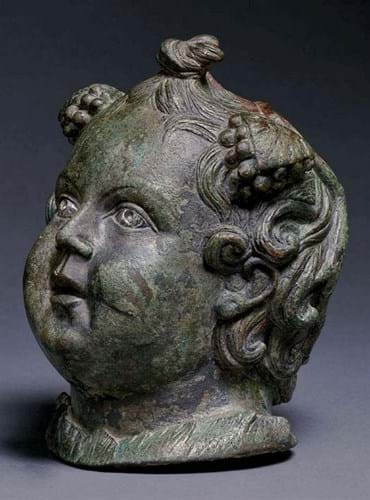
This bronze Roman steelyard weight is in the shape of the infant Bacchus, made with silvered eyes and filled with lead. The 8in (20cm) tall piece would have been used for weighing, probably in an imperial warehouse in the 2nd century AD. It weighs 50 Roman pounds or 16kg. Daniel Katz Gallery offers it for a price in the region of £90,000 in the exhibition The Sculptor’s Medium.
Daniel Katz Gallery is holding the exhibition The Sculptor’s Medium. Among the items on offer is a bronze Roman steelyard weight (above) is in the shape of the infant Bacchus, made with silvered eyes and filled with lead. The 8in (20cm) tall piece would have been used for weighing, probably in an imperial warehouse in the 2nd century AD. It weighs 50 Roman pounds or 16kg and is offered in the region of £90,000.
Tempting talks
A programme of talks runs throughout LAW, including one on jewellery in the time of Charles I held at The Weiss Gallery and a lecture by Arthur K Wheelock about Vermeer’s genre paintings at the Wallace Collection.


